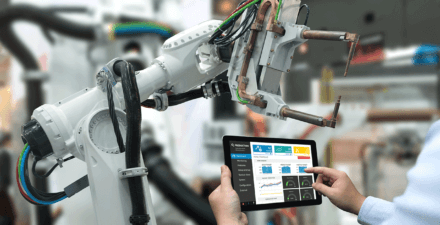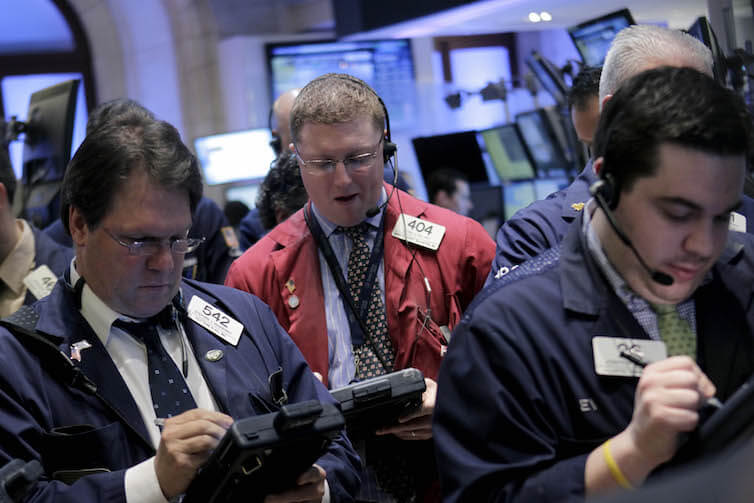Brad DeLong: Worthy reads on equitable growth, February 15-21, 2020
Worthy reads from Equitable Growth:
- If you are in Washington, D.C. this event is definitely a thing to go to: “EconCon 2020,” an Equitable Growth co-sponsored “convening that brings together organizers, campaign professionals, researchers, experts, communicators, and advocates from across the country … Attendees will build connections, discuss pressing issues of the day, plan for the future, and learn how to fit a wide range of policy debates into a coherent progressive economic worldview. Together, and by using every channel available, we will be able to advance an economic vision that delivers shared, sustainable growth and true prosperity for all.”
- Watch Heather Boushey at The New School presenting her “Unbound: How Inequality Constricts…,” which I thought went very well.
- An excellent column from Claudia Sahm, “When will everyone who wants to work have a job in the United States?,” in which she writes: “Ayanna Pressley (D-MA) prefaced her questions directed to Federal Reserve Chair Jerome Powell at last week’s semiannual Humphrey-Hawkins congressional hearings with a history of the full employment mandate … President Franklin Delano Roosevelt called for a Second Bill of Rights, including a right to a “useful and financially rewarding job.” Supreme Court Justice Thurgood Marshall argued that the “right to a job” was secured by the 14th Amendment. Martin Luther King Jr. called for a job to all “who want to work and are able to work. After Dr. King’s assassination, Coretta Scott King carried on fight for the full employment mandate. She attended the signing of the Humphrey-Hawkins Act in 1978, and the reason why Powell was there to testify. Rep. Pressley then asked Powell, ‘Yes or no, given persistent concerns about inflation, do you believe the Federal Reserve can achieve full employment?’ Powell began by thanking her for the history, which he said he “did not know.’”
Worthy reads not from Equitable Growth:
- The manufacturing-sector recession during Trump’s term in office has been seriously underreported. It is a natural consequence of his macroeconomic policies: tax cuts—even (or is it especially?) those sold as boosting incentives to invest—wind up raising the value of the dollar and putting U.S. manufacturing under additional heavy import pressure. So it has been under Trump. Read Joe Ragazzo, “There’s No Resurgence In American Manufacturing. It’s A Myth.,” in which he writes: “By October of last year, U.S. manufacturing had seen two consecutive quarters of contraction. The sector shed 5,000 jobs in December and 12,000 jobs in January. In December, the Institute of Supply Management’s manufacturing index displayed the fastest rate of contraction since June 2009. And although the ISM suggests an uptick may be on the horizon, the sector still lags behind most others … Unlike most sectors, manufacturing is one in which Trump has taken direct action in the form of tariffs and despite his righteous, self-congratulatory bluster, they have likely amounted to a net decrease in employment … One could argue—and pundits do—that manufacturing is the symbolic foundation of the blue-collar support Trump supposedly has. Trump loves the working people, they say … It’s all nonsense. This administration’s policies have hurt manufacturing and continue to do so.”
- This is a very smart loopback on Trump trade policy. Read Brad W. Setser, “Lessons From Phase One of the Trade War With China,” in which he writes: “It is now possible look back at how China decided to respond to Trump’s tariff pressure. China never was prepared—it seems from the outside—to negotiate on China 2025 or the subsidies and procurement preferences at the center of its industrial policies … China views these programs as central to its efforts to upgrade its own technological capabilities and assure its future growth. At the same time, China’s determination to preserve an import-substituting industrial strategy almost guarantees future trade conflict. The means China uses to support its technological development are at odds with those employed by its large-economy peers and assure that any Chinese achievements can credibly be attributed to unfair (though not necessarily WTO illegal) practices. And, well, China’s vision of technological independence likely implies that over time its imports of advanced manufactures from the rest of the world will fall. And in a world where China doesn’t import (much), some of its trade partners may start to wonder why they keep their markets open to China and Chinese-made goods. But these trends won’t play out over the next year—Boeing has bigger problems right now than the C919, China doesn’t yet have indigenous manufacturer of jet engines, China’s efforts to build an indigenous semiconductor industry aren’t going to have a huge impact on its 2020 imports, and Germany’s machine tools haven’t yet been reversed engineered out of the Chinese market. China was able to use its currency to buffer the impact of the trade war without ever losing control—and without burning through a lot of reserves … China did not try to use its Treasuries as a weapon … China didn’t target U.S. manufactured exports in a big way … China did target American agricultural and energy exports, with mixed success.”
- Williams Janeway alerts us to industrial policy and venture capital in seriously historical perspective in “The Making of the Digital Revolution,” in which he writes: “The American VC industry has been the subject of academic analysis for 30 years now. But particularly over the past decade, this scholarship has become more objective and authoritative. Unlike in many other areas of finance or wealth management, U.S. venture capitalists’ investment performance can be examined through data provided by their own investors; it is not self-reported by the VC funds themselves. Such an examination reveals three basic facts about the industry. First, VC returns are highly skewed, with a small number of funds generating most of the excess returns relative to publicly available liquid investments. Second, there is persistence in VC returns, as opposed to the randomness one sees among investors in publicly traded financial assets. The performance of a VC fund’s first investment “predicts” the performance of its next, such that a small number of firms are responsible for all of the outperformance. Lastly, VC funds have concentrated their investing activities and overwhelmingly earned their returns in just two sectors of the economy: information technology and biomedical technology. That last fact, of course, corresponds with the leading role played by the state. In no other sectors of science and technology have political leaders crafted a legitimizing mission for such high-risk investments with such enormous potential returns.”







